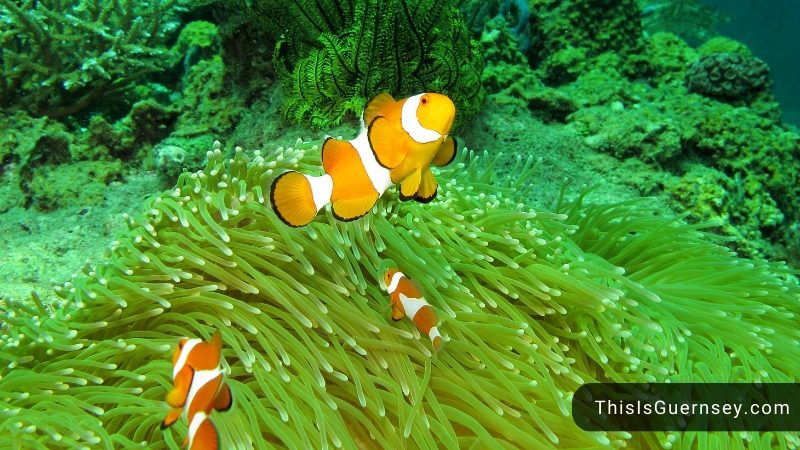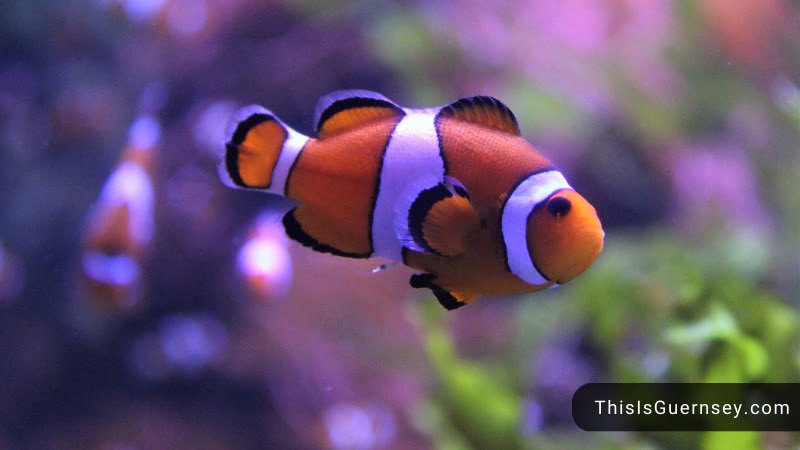Clownfish are popular marine fish species that are widely kept in aquariums and home aquarium setups. Proper feeding is a crucial aspect of keeping clownfish healthy and happy in captivity. Determining the appropriate feeding schedule and frequency can be a challenge for new and experienced aquarium hobbyists alike. With a variety of feeding options available, including live and frozen foods, dried pellets, and more, it can be difficult to know how often to feed your clownfish. So how often to feed clownfish?
In this article, we will explore the best feeding practices and frequency for clownfish, including how to determine the appropriate portion size, how to avoid overfeeding, and other important tips and considerations. Whether you’re a new or experienced clownfish keeper, this article will provide you with all the information you need to ensure that your clownfish receive a balanced and nutritious diet.
How Often To Feed Clownfish?
Adult clownfish that have already reached maturity should be fed 2 or 3 times per day spread out equally over the 24 hours. If you have juvenile clownfish, feed them 3-4 times per day.
Actually, there is no set rule to follow when it comes to feeding the fish in your aquarium. But this is what I recommend clownfish eat successfully for many years. Follow this guide and you will succeed, regardless of what type of clownfish live with you.
How Much To Feed Clownfish?
The hunger of clownfish never ends. They will also continue eating as you keep adding food to their tank. It is your responsibility to make sure that you do not feed them more than they should actually consume in one day, which can be dangerous and unhealthy for the fish.

Provide them with enough food that they will eat in about 1 minute. Clownfish are very aggressive eaters and have no problem eating all their food quickly. Once they have consumed all the food in this period do not provide anymore.
If they have food leftover after that period expires, you are still giving them too much food. Excess food isn’t a good thing. Not only will your clownfish produce more waste, but anything they don’t eat will ruin the chemistry of your water if you fail to remove these leftovers from the tank. If there is extra food after the fish have stopped eating, net it out, or use a siphon to remove it.
What Is Clownfish’s Food?
Clownfish are omnivores, which means that they will eat both animal and plant-based foods. A varied diet is important for clownfish so their diet can’t be focused on only one type of food. There are many options available for types and brands of foods so you will always have a variety to choose from. Giving these fish the right foods is key to maintaining a healthy diet. Clownfish foods can be in many different forms.
Natural food
You can feed it brine and live food occasionally as well, like Mysis, krill, or shrimp (popular fish food). To make things easier, frozen live food is a must-try option for clownfish. Clownfish also eat vegetables, so make sure you add some of those in their diet too, like spinach or nori.
Feeding your fish can seem like fulfilling the demands of a ravenous child at times and be complicated. You can simply feed your clownfish with regular pellets or flakes, twice a week add some vegetables or live food into the diet.
Alternative food sources for clownfish
If you have an anemone in the tank, the clownfish can eat anemone’s food waste and parasites. Even though they look like plants, anemones are sea creatures that prey on other sea creatures. Clownfish will consume any uneaten food.
While it isn’t an excuse to neglect your fish, depending on the nature of your aquarium, you can probably trust your clownfish may to fend for themselves for a while if you can’t feed them. However, if your tank doesn’t feature any anemone or vegetation, your fish rely more on your feeding schedule.
How To Feed Clownfish?

- Offer a varied diet: Clownfish should be fed a variety of food items, including both fresh and frozen foods, dried pellets, and frozen or live brine shrimp. Offering a varied diet will ensure that the clownfish receive all the necessary nutrients and vitamins to keep your clownfish healthy. So knowing how often to feed clownfish is so important to build a diet.
- Offer the right amount of food: Overfeeding is a common problem when keep your clownfish. It is important to offer only the amount of food that the clownfish can consume in 2-3 minutes. Any uneaten food should be removed from the aquarium to prevent water quality issues.
- Feed the clownfish at the right time: Clownfish should be fed 2-3 times a day, with each feeding lasting no longer than 2-3 minutes to avoid overfeeding your clownfish. It is best to feed the clownfish in the morning and late afternoon or early evening.
- Target feed: If you have other fish in the aquarium, you may need to target feed the clownfish to make sure that they are getting enough food. This can be done by placing the food in a specific area of the aquarium where the clownfish can easily access it.
- Consider using an automatic feeder: If you’re going to be away for a few days, you may want to consider using an automatic feeder to ensure that your clownfish are fed on a regular basis.
- Offer a mix of dry and wet food: Some clownfish prefer dried pellets, while others may prefer fresh or frozen food. Offering a mix of both types of food can help ensure that the clownfish receive a balanced and nutritious diet.
Watch more in this video too.
As with other saltwater fish, it is important to remember that the specific feeding needs of your clownfish will depend on the species, age, size, and overall health of the fish. Always keep a close eye on your clownfish to ensure that they are eating well and that their feeding habits are not causing any problems in the tank.
How Long Can Clownfish Live Without Food?
Besides knowing how often to feed clownfish, you should think about how they can live without food too. Talk to some owners who have experience with these fish, they might say they go two or three days without feeding, while others may tell you their clownfish were able to go for an entire week survives without food.
The duration that any fish can survive without eating depends on factors such as its size and feeding habits. Older and larger fish can survive for longer without food because of the substantial fat reserves they have. Younger, smaller fish are not so lucky. The younger the clownfish, the faster they will deteriorate without food.
FAQs
How often to feed anemone?
Anemones should be fed 2-3 times a week with small pieces of meaty foods such as shrimp, squid, or krill. It is important not to feed the anemones too much, as uneaten food can harm water quality. The frequency of feeding may vary based on the species of anemone, its size, and overall health, so it’s important to monitor your anemone closely to determine the best feeding schedule for your specific setup.
Can you overfeed a clownfish?
Yes. Knowing how often to feed clownfish can avoid overfeeding. Not only is the health of the fish a serious concern, but it is one of the most common mistakes that new hobbyists make. Overfeeding will lead food across the tank’s surface and uneaten food will stagnate in the tank creating excess nutrients and waste that will affect the livestock in the tank.
Anemones – how do they help clownfish?
In order to have a fully nutritious diet, Clownfish need anemones in their environment. Anemones are crucial for the Clownfish’s native habitat and are important for them to thrive in their natural habitats. Anemones not only protect your fish from other fish, but they also provide them with food!
Conclusion
Feeding your clownfish properly is important to keep them healthy and live a long and happy life. If you follow the guidelines mentioned in this article, you will have a colorful and healthy clownfish for you to enjoy.
I hope my article had answered your question “How often to feed clownfish”. Overall, the best way to determine your clownfish feeding schedule is by experimenting. It would help to experiment with different schedules and see what works best for your particular fish.

Annette M. Chaney is an experienced marine biologist with over 20 years of experience as an aquarist and fishkeeper. She started her first aquarium at a young age, filling it with frogs and goldfish obtained from the ten-cent pet store.
Annette grew up caring for and breeding African Cichlids, which led to a hobby in high school that doubled as a profitable means. Attending Reed College gave her time to solidify herself as an accomplished aquarium caretaker with an eye for sales. After that, from 2009 – 2013, she studied at Roger Williams University – one of the most prestigious universities for Aquaculture and Aquarium in USA. She is the founder of AquariumCircle since 2010.
